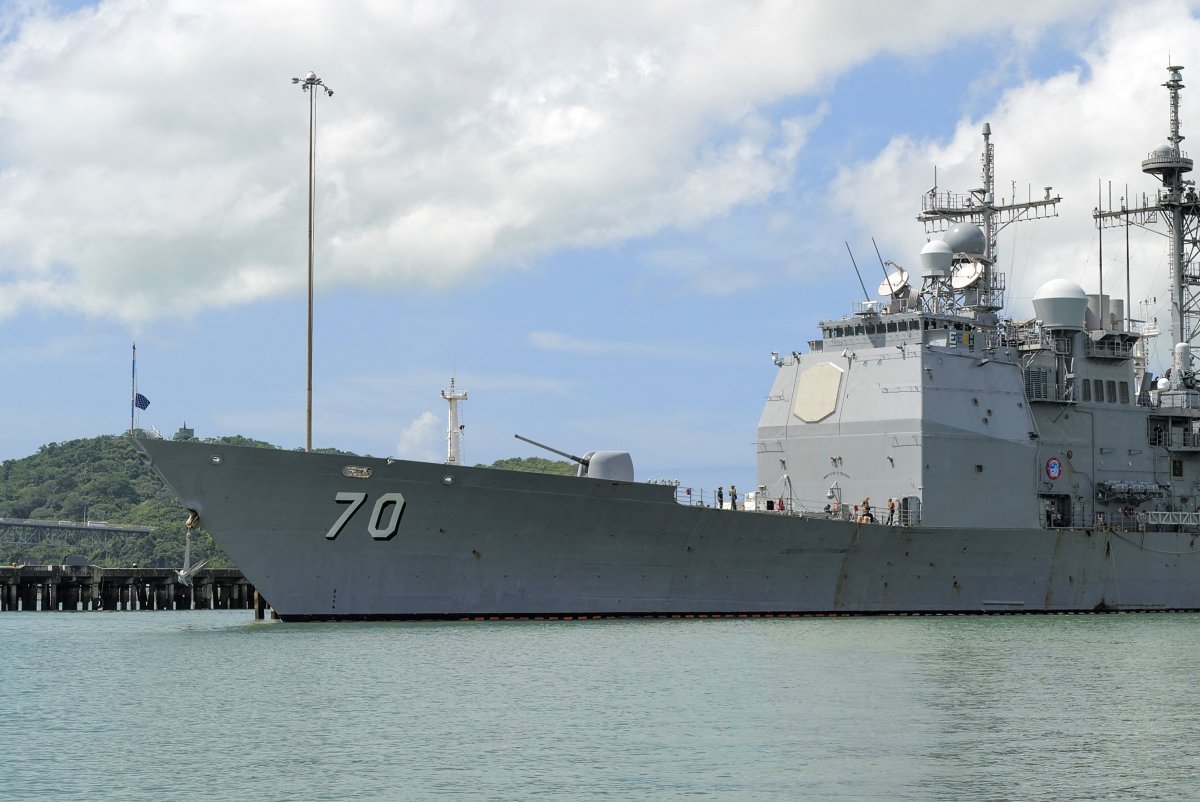The U.S. Navy’s guided missile cruiser, USS Lake Erie, transited the Panama Canal late Friday, entering the Caribbean as part of an expanded U.S. military presence near Venezuela.
The move comes amid rising tensions in the region and a stated mission to combat drug trafficking.
Newsweek reached out to the State Department via email for comment on Friday.
Why It Matters
As reported by Newsweek, U.S. military forces are asserting their presence in international waters, stepping up deployments in the Caribbean and Pacific as the Trump administration pledges to deter drug cartel activity.
The deployment highlights the Trump administration’s increased focus on projecting military power in the Southern Caribbean.
While the official aim is to target narcotics operations, analysts and regional observers have noted that the positioning of warships and a nuclear-powered submarine signals a wider show of force near Venezuela.

MAURICIO VALENZUELA/AFP/Getty Images
What to Know
The USS Lake Erie passed through the canal’s locks around 9:30 p.m. local time, after spending two days at the Port of Rodman. Local residents reported observing the vessel as it moved eastward toward the Atlantic.
The U.S. presence in the Southern Caribbean now includes several warships and more than 4,500 personnel. Overall, the U.S. deployment comprises three destroyers, two landing dock ships, an amphibious assault ship, a cruiser, and a littoral (small and compact) combat ship, all either already in the region or en route.
Each destroyer carries detachments of U.S. Coast Guard and law enforcement personnel, tasked with making arrests or detentions during drug interdiction operations, as reported by The Washington Post.
Venezuela, considered a U.S. adversary, is led by President Nicolás Maduro, whom the Trump administration accuses of running a drug cartel. This month, the U.S. doubled the bounty on Maduro’s capture, raising it from $25 million to $50 million—the second increase this year.
Maduro has condemned the U.S. deployment, calling it a threat to Venezuela’s sovereignty. In response, the country has mobilized 15,000 security forces along its Colombian border and announced plans to patrol territorial waters with drones and naval vessels, while encouraging civil defense training nationwide.
Some view the U.S.’s move as a form of “gunboat diplomacy” designed to apply pressure on the Venezuelan government, exacerbating regional tensions without resorting to full-scale military intervention.
What People Are Saying
In a letter to the Secretary-General of the United Nations (UN), António Guterres, Maduro said in part: “I request that you, within the framework of the powers conferred upon you by the Charter of the United Nations, assume the active defense of its fundamental values and principles, urging the Government of the United States of America to put an end to these hostile actions and fully respect the sovereignty, territorial integrity, and political independence of the Bolivarian Republic of Venezuela.”
What Happens Next
The USS Lake Erie will continue its Caribbean operations, and the wider U.S. naval presence in the region is expected to remain active for the foreseeable future.
Observers will be watching closely for further movements and potential escalations in U.S.-Venezuelan relations.